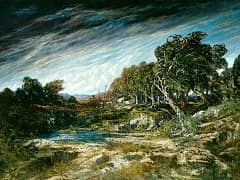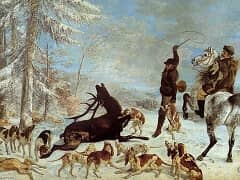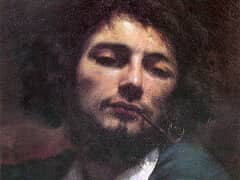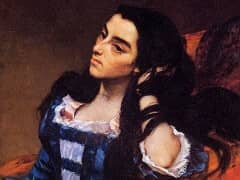The Homecoming, 1854 by Gustave Courbet

The Homecoming is probably identical with the Autoportrait Saluant, which was owned by the painter's sister Juliette and sold at the sale of his work in 1882. The French title, Le Retour au pays, is a logical one to have become attached to it, given the fact that the figure is a traveler and that the character of the landscape is that of the Doubs countryside. The details of the clothing, the salutation with the hat, the backward tilt of the head, all relate the figure to that of the artist in The Meeting. In this way the image can be read as that of the artist as wanderer, having no fixed interests to protect but nonetheless rooted emotionally in the particular land of his childhood, which is also the source of his art. However far or often he may go, he always returns here, to the rough and unspoiled countryside of the valley of the Loue. It is through Courbet's construction of these landscapes and the people who live in harmony with them that he has been able to realize his ambition to "make a living art," as he wrote in the catalogue of his 1855 one-man show.
The strong masculine body fills the pictorial field. The limbs - or three limbs and a stick - make a modified X shape, wider at the top, which gives the figure a sense of being rooted in the landscape like a tree, bringing to mind the painter's self-identification with the great oak of Flagey. Once again, as in the case of such various contemporaneous works as The Bathers and The Grain Sifters, the viewer is drawn into the pictorial space by a figure seen from the back. In this instance Courbet has achieved a kind of tour de force of expressiveness without any sign of the face.
The exaltation felt by this man as he greets his native turf is conveyed entirely by the act of saluting, the disposition of the (unfinished) head, and the bend of the knee. One senses the painter's understanding that the deepest feelings are those that resist facial expression in the static art of painting. Michael Fried's ideas about the structure of beholding apply here, for this painting is all about beholding, and it is the sight of the land that brings forth the salute. The viewer is drawn into a complex structure: the painter's presentation of himself as a viewer, responding to that which is the emotional force of the image and yet is hidden from our own view.















